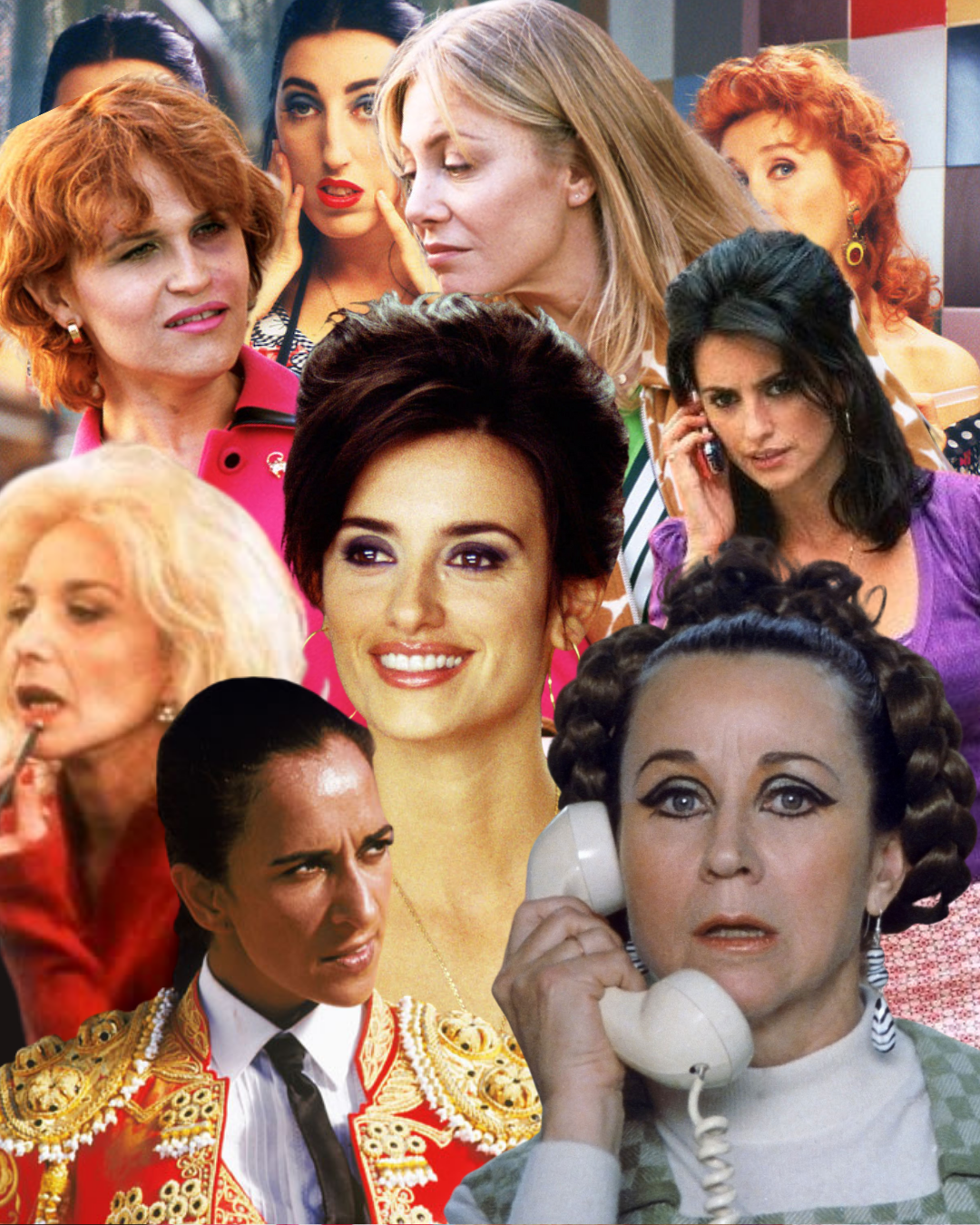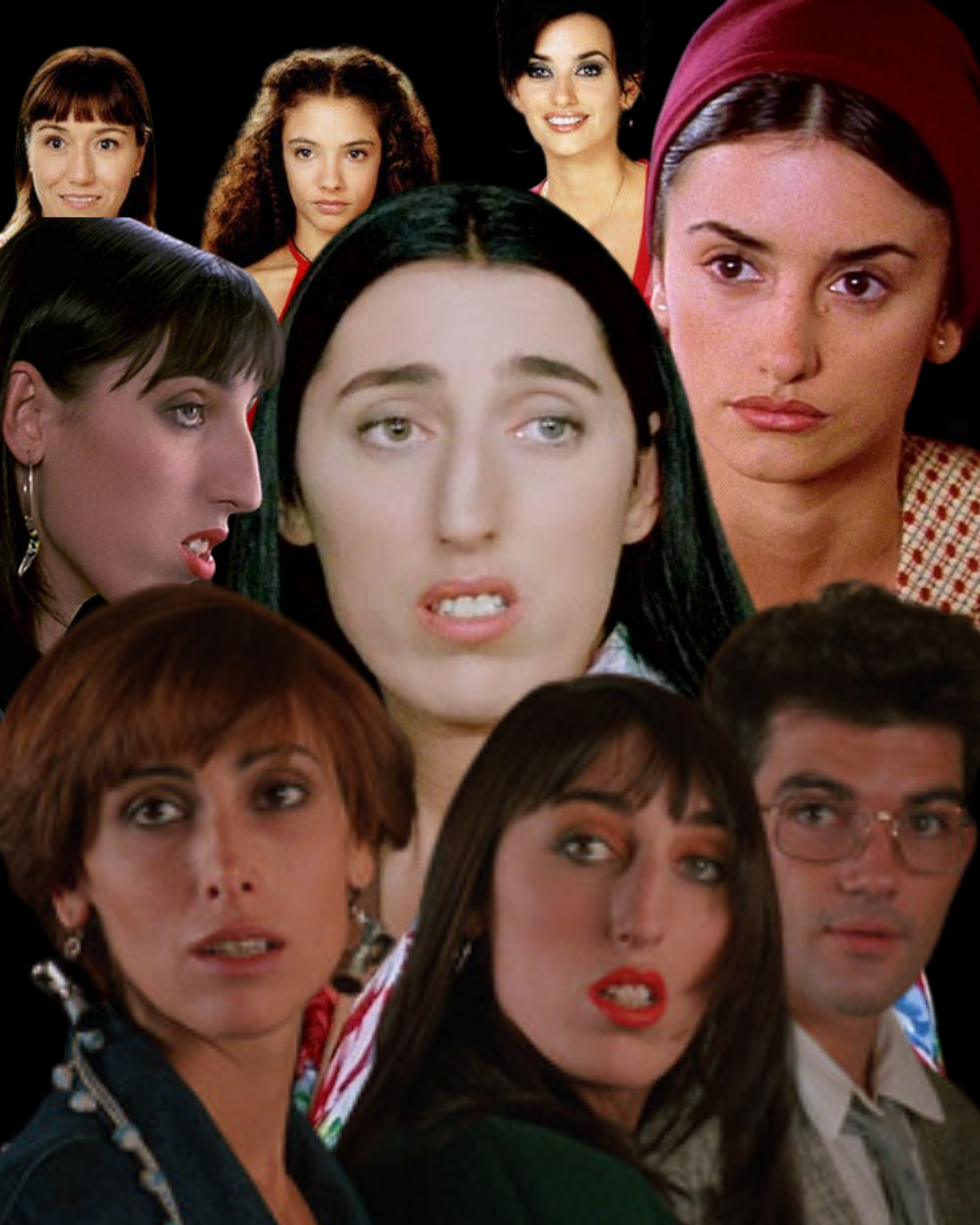I Want To Be an Almodóvar Girl
Make it stand out
I first came across the word cursi a few years ago in a Spanish class in Barcelona. It’s an umbrella term that’s used for anything that is distasteful, cheesy, kitsch, camp, overly sentimental etc., and was being used to describe the films, and particularly the women in these films, of Pedro Almodóvar. By the tone of voice and scrunched up face of the teacher as she said it, cursi felt like it was supposed to be a negative word, but I could only hear positives, these were some of my favourite adjectives.
Despite the negative connotations of the word, cursi is probably the easiest and most accurate description of an Almodóvar film. They’re sumptuous melodramas, that differ from each other – some make you laugh while others make you cry, some are irreverent and fun while others challenge your thoughts. What remains the same throughout his repertoire are the Pop Art colour palettes and incredible outfits. Squeaky voiced Kika (Verónica Forqué) flits about in floral flirty dresses in Kika (1993), while in Talk to Her (2002), Lydia (Rosario Flores) cuts an incredibly sexy, androgynous figure in her dramatic Matador outfit. Two very different looks that instantly distinguishes their personalities, but equally flamboyant.
The films also always have an amazing array of women, and while the term Almodóvar Girl is used to categorise these women (there’s even a rather cheesy song about them, “Yo Quiero Ser una Chica Almodóvar”), it’s difficult to define what this means. There isn’t exactly a definitive “Almodóvar Girl,” as she differs in every film. She can be a confident trans woman or an actress dealing with ageism. She can be a plucky make-up artist or a woman who is imploding after an affair with a terrorist. She can be a living work of art (hello Rossy de Palma) who passes out from drugged gazpacho, or even a kind-hearted pregnant nun. The threads that keep these women together are their killer wardrobes that acts as their armour, and their friendships with each other.
___STEADY_PAYWALL___
However, I noticed in Spain that there seemed to be a snobbery towards the Almodóvar Girl. The subject matters of the films are probably a factor in this, as some of the scars of Franco’s dictatorship and the hold of the church run deep, and I was living in quite a wealthy, religious suburb of Barcelona. Still, I was a little bit shocked by the openness of it. Some of the older generation fear the “promiscuity” of modern women as if that will be our undoing and forgetting that it takes two to tango. While, more shockingly, girls my age were quite willing to cut off friends who had babies out of wedlock, as boys point and laugh at you for wearing a Carmen Miranda-esque headscarf to a club, and you try your very best to not scream “I WAS BORN OUT OF WEDLOCK.”
This “promiscuity” is something that Almodóvar consistently plays with, explores, and questions the double standards of. For him, its sexual freedom, its freedom from repression, and its none of your damn business how someone wants to explore their sexuality. But when this takes a dark turn, we then need to address why society tends to turn a blind eye to it and side with the men. Fashion also represents a freedom and self-confidence that people can be fearful of, even when its worn as a protective mask. Some people are just not ready for or accepting of the Almodóvar Girl and the freedom of expression she represents.
“Their clothes are part of their identity, their freedom of expression, and their confidence to tackle the shit that life throws at them.”
I’ve admired the tacky retro aesthetics of Almodóvar since I first saw Volver (2006) as a teenager. I fell in love with the juxtaposition of the rich vivid colours and garish prints of the clothes and homes of the women against their bleak and melodramatic storylines. I also fell in love with Penélope Cruz’s Raimunda, a beautiful portrayal of a loving and hardworking mother, who would do anything for her daughter. In the hands of another director, Raimunda could easily fall into a tired, Ken Loach-like- grimness trope. Whereas in the hands of Almodóvar, Raimunda is treated like a young Sophia Loren, in her gold hoops, clashing tight cardigans and skirts, and with a warmth and glamour that often goes unnoticed in the portrayals of working-class mothers in cinema.
Over the years, the style of Almodóvar and his women have become more refined, more designer, and dare I say it, cleaner. In some films this has worked. In The Human Voice (2020), Tilda Swinton looks absolutely divine in head-to-toe high fashion, and in Kika, the costumes were designed by Jean Paul Gaultier and Gianni Versace, respectively. The difference with Kika and its use of high fashion though is that Gaultier also loves to blur the lines between high and low art and sexuality, and Gianni Versace was never one to shy away from ostentatious kitschy glamour.
In the film, Gaultier decks out Victoria Abril’s Andrea Caracortada (Scarface in Spanish), the host of a Crimewatch via Elvira TV show about horrific criminals, in bizarre but fabulous apocalyptic, tits-ablaze couture, topped off with Betty Spaghetti hair. It’s pure theatre and makes it difficult to digest her show, as you want to see what she’ll wear next, but that sucks you into the disturbing content she produces. And it’s this this blurring of taste and morals being shown through fashion that is something I miss in some of his newer offerings. Chanel and Balenciaga are just a little to clean and sanitary for me.
Of course, refining can be a good thing, it naturally comes with experience and practising a craft. Plus, the areas in Madrid where Almodóvar first worked in, and maybe Spain as a whole, have grown and refined themselves since its rebirth after Franco, and so it makes sense for his films to grow with it. I just think I miss the tacky grit and stylised rough-around-the-edges charm that came with some of the early and middle films. There seemed to be a bit more warmth and love for underrepresented women (and affordable clothes) there.
I tend to romanticise about being an Almodóvar Girl, wanting to teeter around in wiggle dresses and polka dot heels on monochrome tiled floors, living the cursi dream. But after rewatching a few films to write this, I realised that they have far too many problems that I do not have the strength to deal with, I think we’ve all dealt with enough melodrama these past two years. Having said that though, in most cases it’s the frivolity of fashion, as well as friendships with other women, that keep these girls going. Their clothes are part of their identity, their freedom of expression, and their confidence to tackle the shit that life throws at them. So, if you don’t mind me, I’ll be off in my gazpacho red jumpsuit, dramatically lip-syncing to “Puro Teatro” as I cry over something trivial. That’ll be my contribution to the Almodóvar Girl.
Words & Graphics: Rosie Carter


